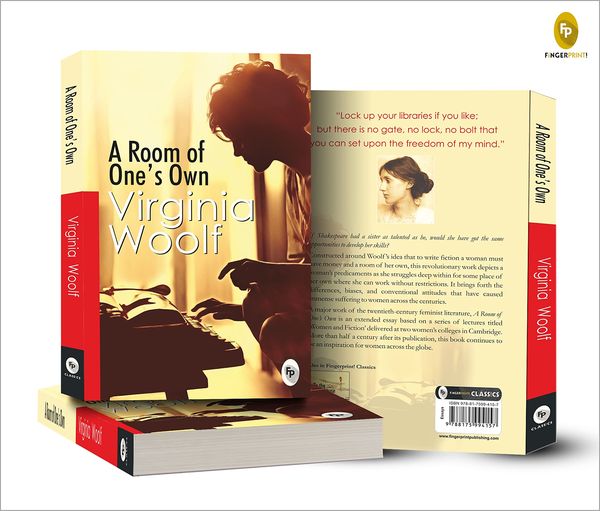“Lock up your libraries if you like;
but there is no gate, no lock,
no bolt that you can set
upon the freedom of my mind.”
If Shakespeare had a sister as talented as he, would she have got the same opportunities to develop her skills?
Constructed around Woolf’s idea that to write fiction a woman must have money and a room of her own, this revolutionary work depicts a woman’s predicaments as she struggles deep within for some place of her own where she can work without restrictions. It brings forth the differences, biases, and conventional attitudes that have caused immense suffering to women across the centuries.
A major work of the twentieth-century feminist literature, A Room of One’s Own is an extended essay based on a series of lectures titled ‘Women and Fiction’ delivered at two women’s colleges in Cambridge. More than half a century after its publication, this book continues to be an inspiration for women across the globe.
About the Author
Born as Adeline Virginia Stephen in Kensington, London, in 1882, Virginia Woolf was the daughter of the eminent critic and founding editor of the Dictionary of National Biography Leslie Stephen and Julia Prinsep Duckworth Stephen. Raised by her parents in their literate and well-connected household, she was influenced by the Victorian literary society and the prominent British intellectuals of her time including Henry James, George Henry Lewes, and James Russell Lowell.
Virginia began writing in her teens. Her reviews were published anonymously in the Times Literary Supplement and other journals. The Voyage Out, originally titled Melymbrosia, was her first novel published in 1915 by Duckworth. She developed her art and went on to publish a number of novels including Night and Day (1919), Jacob’s Room (1922), Mrs Dalloway (1925), To the Lighthouse (1927), Orlando (1928), The Waves (1931), and The Years (1937).
A Room of One’s Own (1929) and Three Guineas (1938) are among her famous non-fiction books. She drowned herself on March 28, 1941, by walking into the River Ouse with her overcoat pockets filled with stones. Her body was found on April 18, 1941.
Virginia Woolf’s works have been translated into more than fifty languages. She continues to remain one of the significant writers of the twentieth century.
- Weight : 139
- Breadth : 12.6
- Length : 19.6
- Height : 0.8






